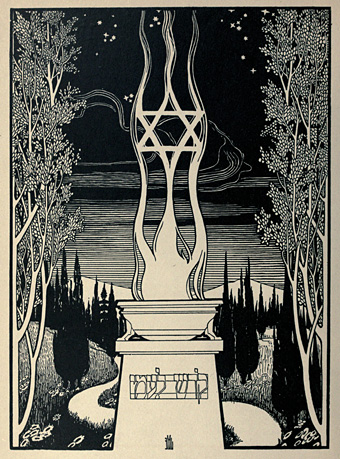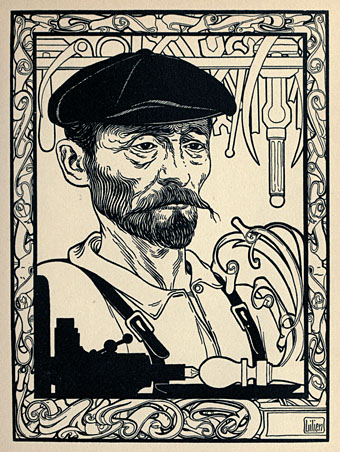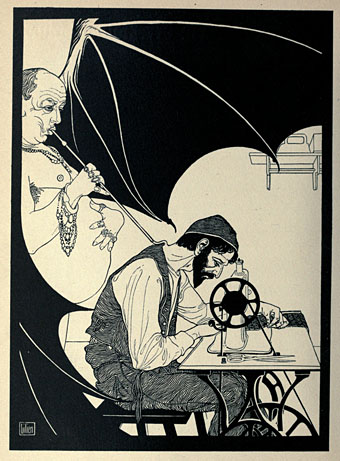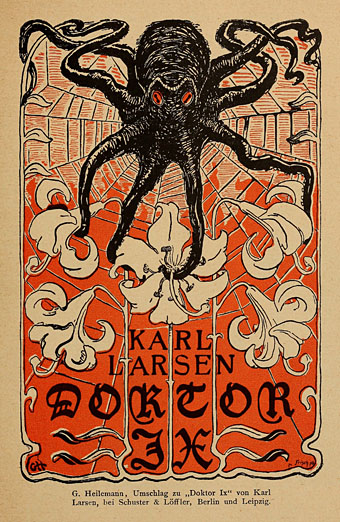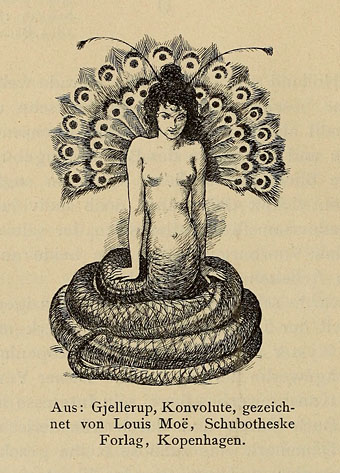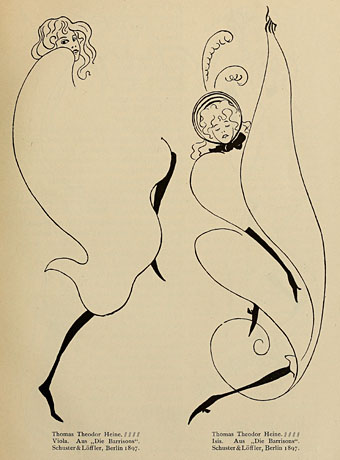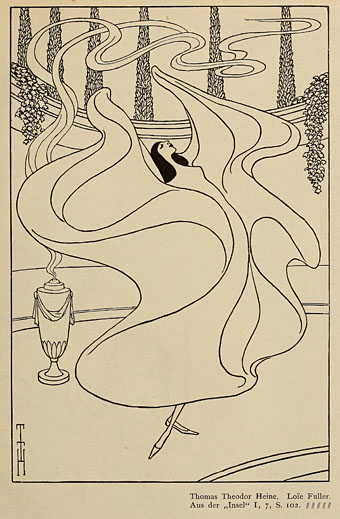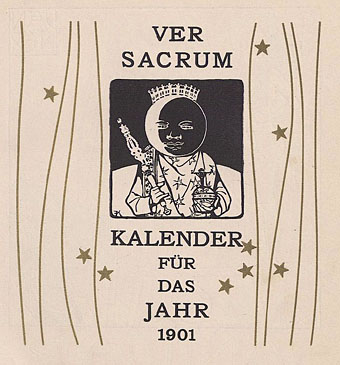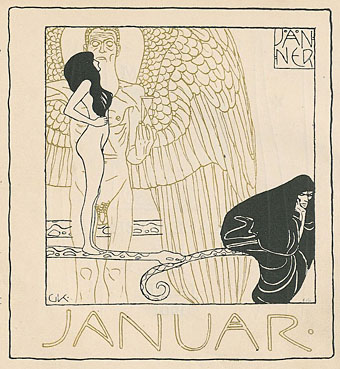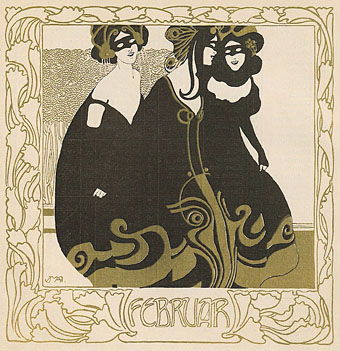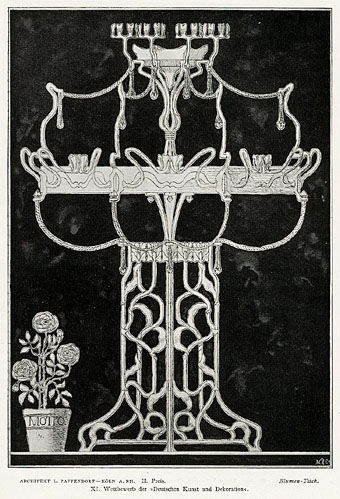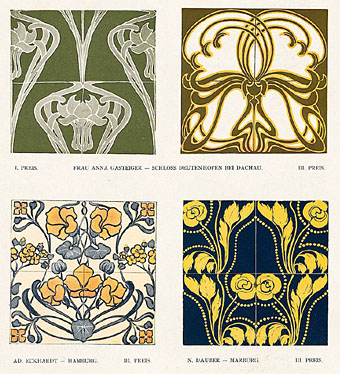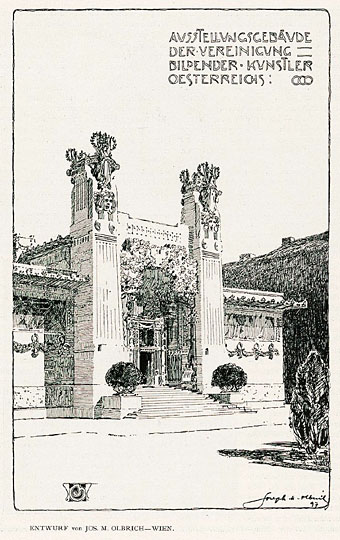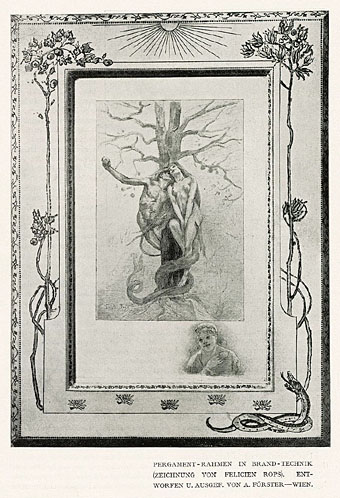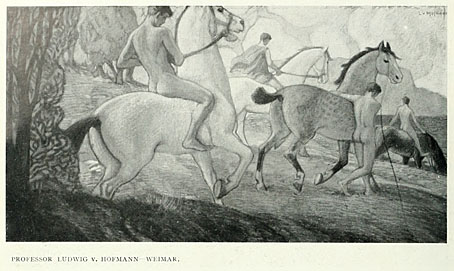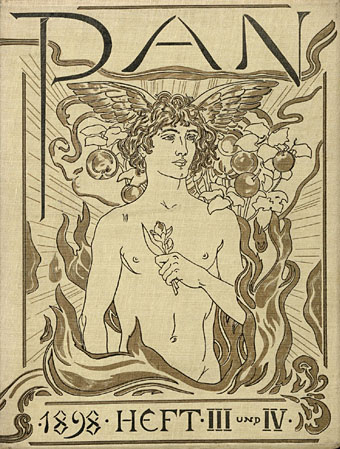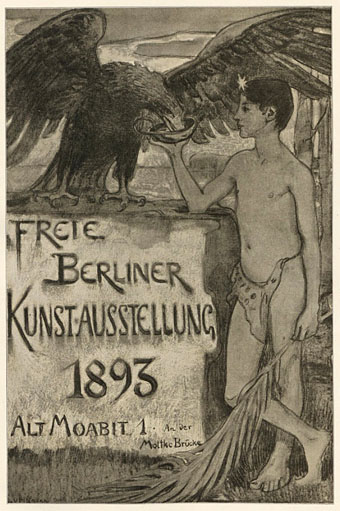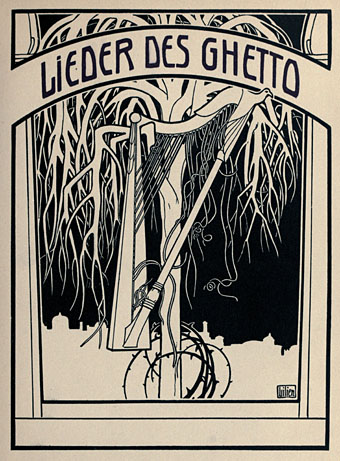
There are no golems in Morris Rosenfeld’s Songs of the Ghetto (1899), translated here by Berthold Feiwel for a German readership as Lieder des Ghetto (1902). But the Berlin edition does contain many superb full-page illustrations and embellishments by Ephraim Moses Lilien (1874–1925), a German artist whose work has featured here on a number of occasions. I’d seen a couple of these drawings before but hadn’t quite registered the pronounced Beardsley influence until now. Aubrey had only died four years before this book was published, and while Lilien’s style is strong enough to establish its own identity you can find a Beardsley-like quality not only in the heavy blacks and areas of white, but also in the border designs, the treatment of landscape and foliage, and even the jewellery on the demon figure below, details which resemble the similar jewellery on Beardsley’s title page for the story of Ali Baba. There’s more of Lilien’s work at this Flickr set while the rest of the book may be browsed or downloaded at the Internet Archive.
